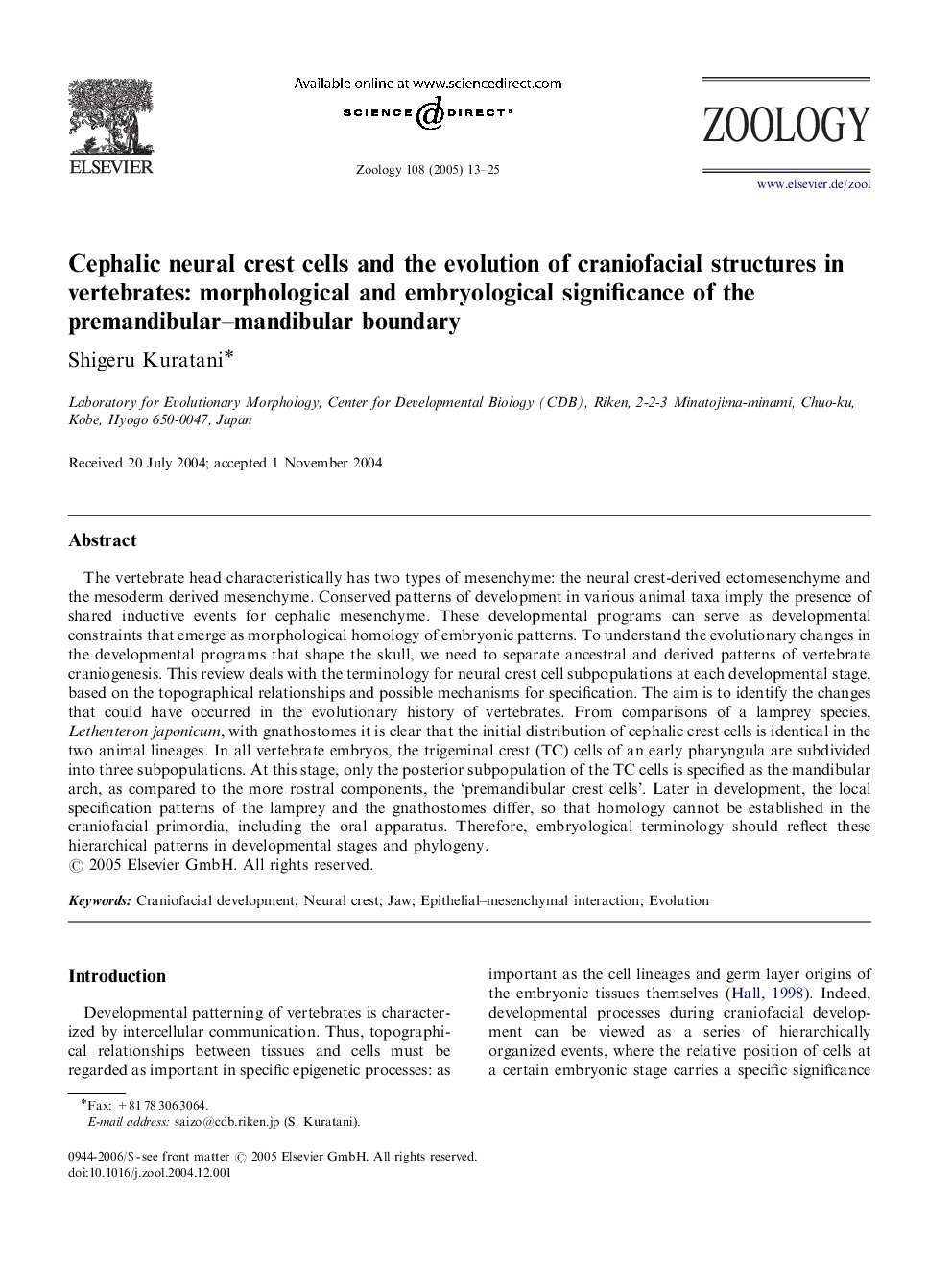| کد مقاله | کد نشریه | سال انتشار | مقاله انگلیسی | نسخه تمام متن |
|---|---|---|---|---|
| 9110144 | 1154894 | 2005 | 13 صفحه PDF | دانلود رایگان |
عنوان انگلیسی مقاله ISI
Cephalic neural crest cells and the evolution of craniofacial structures in vertebrates: morphological and embryological significance of the premandibular-mandibular boundary
دانلود مقاله + سفارش ترجمه
دانلود مقاله ISI انگلیسی
رایگان برای ایرانیان
کلمات کلیدی
موضوعات مرتبط
علوم زیستی و بیوفناوری
علوم کشاورزی و بیولوژیک
علوم دامی و جانورشناسی
پیش نمایش صفحه اول مقاله

چکیده انگلیسی
The vertebrate head characteristically has two types of mesenchyme: the neural crest-derived ectomesenchyme and the mesoderm derived mesenchyme. Conserved patterns of development in various animal taxa imply the presence of shared inductive events for cephalic mesenchyme. These developmental programs can serve as developmental constraints that emerge as morphological homology of embryonic patterns. To understand the evolutionary changes in the developmental programs that shape the skull, we need to separate ancestral and derived patterns of vertebrate craniogenesis. This review deals with the terminology for neural crest cell subpopulations at each developmental stage, based on the topographical relationships and possible mechanisms for specification. The aim is to identify the changes that could have occurred in the evolutionary history of vertebrates. From comparisons of a lamprey species, Lethenteron japonicum, with gnathostomes it is clear that the initial distribution of cephalic crest cells is identical in the two animal lineages. In all vertebrate embryos, the trigeminal crest (TC) cells of an early pharyngula are subdivided into three subpopulations. At this stage, only the posterior subpopulation of the TC cells is specified as the mandibular arch, as compared to the more rostral components, the 'premandibular crest cells'. Later in development, the local specification patterns of the lamprey and the gnathostomes differ, so that homology cannot be established in the craniofacial primordia, including the oral apparatus. Therefore, embryological terminology should reflect these hierarchical patterns in developmental stages and phylogeny.
ناشر
Database: Elsevier - ScienceDirect (ساینس دایرکت)
Journal: Zoology - Volume 108, Issue 1, 15 March 2005, Pages 13-25
Journal: Zoology - Volume 108, Issue 1, 15 March 2005, Pages 13-25
نویسندگان
Shigeru Kuratani,